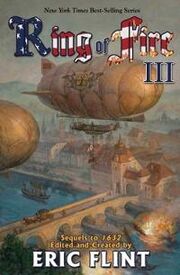An airship or dirigible is a type of lighter-than-air aircraft that can be steered and propelled through the air using rudders and propellers or other thrust mechanisms. Unlike aircraft such as airplanes and helicopters, which produce lift by moving a wing through the air, lighter-than-air aircraft stay aloft by having a large "envelope" filled with a gas which is less dense than the surrounding atmosphere.
The main types of airship are non-rigid (or blimps), semi-rigid and rigid. Blimps are "pressure" airships where internal pressure, maintained by forcing air into an internal ballonet, is used to both maintain the shape of the airship and its structural integrity. Semi-rigid airships maintain the envelope shape by internal pressure, but have some form of internal support such as a fixed keel to which control and engine gondolas and stabilizers and steering surfaces are mounted. Rigid airships have a structural framework which maintain the shape and carries all loads such as those from gondolas and engines.
Airships in 1632[]

Airships at work in the new timeline.
In the years following the Ring of Fire, airships had some advantages over airplanes. One was that they did not require carefully prepared and maintained airfields. Another was that they could be propelled by steam engines, and could therefore use many different sorts of liquid fuel, as long as it burned fairly cleanly.[1]
Airships used either hydrogen or hot air to provide lift. Usable quantities of hydrogen could be produced by means such as spraying water on red-hot iron.[2] Hydrogen could provide enough lift to allow an airship to be steam-driven, but a steam-driven airship could not go very far unless it carried a steam recovery system. Gas bladders for hydrogen-filled airships were made of goldbeater's skin, as it was known to have been used for that purpose in the early 20th century. However, goldbeater's skin is a by-product of slaughtering oxen and other cattle, and it takes many cattle to make even a small amount of it.[3]
By the spring of 1635, Estuban Miro and Marlon Pridmore, working in Grantville, had each developed a semi-rigid airship that used hot air to provide lift.[4]. By January of 1636, Miro had a small fleet of airships (all of the Swordfish class: the Swordfish, the Albatross, the Pelican and the Petrel), operating out of Bamberg.[5] Hot air has much less lift than hydrogen, so hot-air airships tended to be smaller, and used small up-time engines from motorcycles and lawn mowers. These engines worked best with gasoline, but could be tuned to use the M85 methanol/gasoline mixture used in airplanes, and could use other fuel mixtures as long as there was a high proportion of pure methanol or ethanol in the mix. Because of the amount of fuel used by the burners, hot-air airships were short range craft; planning a long trip in one meant planning for fuel to be available along the route.
The Ottoman Empire had developed airships, and successfully used them in the siege of Baghdad. Russia was testing a semi-rigid steam-powered airship that also used the steam to provide extra lift.[6]
References[]
- ↑ Part four of the serial "No Ship for Tranquebar", in Grantville Gazette XXX refers to Marlon Pridmore's airship having used olive oil and ghee that had been heavily adulterated with palm oil.
- ↑ Grantville Gazette XXIX, "No Ship for Tranquebar, Part Three"
- ↑ Goldbeater's skin on Wikipedia
- ↑ Ring of Fire III, "Upward Mobility"
- ↑ ibid., "Four Days on the Danube"
- ↑ Grantville Gazette XV, "Butterflies in the Kremlin, Part Six: The Polish Incident or The Wet Firecracker War"